#self designed
Text
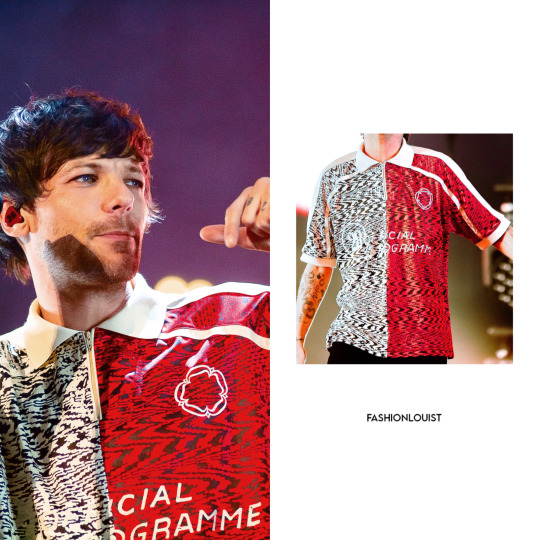
Louis appears to be wearing a 28 Official Programme Self-Designed T-Shirt on stage to kick off the Latin America Tour Leg in Chile tonight ! It has the characteristic symbol he has included so far in his designs, as well as the “28 Official Programme” on the chest.
It’s a Half-Red/Half-White (as far as we can see) jersey style design with a white collar and white lining at the short sleeves. We will wait for better pictures to confirm ! :)
#louis tomlinson#louis tomlinson fashion#louis fashion#fashionlouist#28 official programme#self designed#ltf22#chile santiago
215 notes
·
View notes
Text

3 notes
·
View notes
Text

A yellow wing in a closed like position that is great for stickers
#art#artwork#digital aritst#digitaldesign#redbubble#self promte#self advertising#angel wings#Pastelwingart#self designed#soft#yellow#yellow wings#feather#feathers#yellow feathers
2 notes
·
View notes
Text
Moments that make me feel better...

Getting reviews like this?!?
Couldn't ask for a better way to boost my mood.
#positive review#handmade jewelry#jaded ink designs#my shop#self designed#the little things#happy words#art well done#artists on tumblr
5 notes
·
View notes
Text

FNAF movie Mike meets Jeremy Fitzgerald
#myart#chloesimagination#comic#jeremy fitzgerald#michael afton#mike schmidt#fnaf#fnaf 2#fnaf fanart#five nights at freddy's#FINALLY more of Jeremy!!#sorry it’s taken so long for more of this boy but he returns 🩵#Mike doing a self burn here too#HE knows very well he doesn’t have friends so how Michael got one#(Mike has one friend too and that’s Jeremiah)#Least Mike made Jeremy laugh-#Jeremy just got here and his homie already being out on blast#I love the idea of Jeremy and Michael actually being friends#like Michael is awful anti social monster and he’s buddies with the most chipper guy ever#it’s good bit I think it’ll be fun to explore that more!#I gotta draw Jeremy more after this#there’s sm to draw with him 💜💜#I hope yall like him and his design!!
5K notes
·
View notes
Text
How lock-in hurts design

Berliners: Otherland has added a second date (Jan 28) for my book-talk after the first one sold out - book now!

If you've ever read about design, you've probably encountered the idea of "paving the desire path." A "desire path" is an erosion path created by people departing from the official walkway and taking their own route. The story goes that smart campus planners don't fight the desire paths laid down by students; they pave them, formalizing the route that their constituents have voted for with their feet.
Desire paths aren't always great (Wikipedia notes that "desire paths sometimes cut through sensitive habitats and exclusion zones, threatening wildlife and park security"), but in the context of design, a desire path is a way that users communicate with designers, creating a feedback loop between those two groups. The designers make a product, the users use it in ways that surprise the designer, and the designer integrates all that into a new revision of the product.
This method is widely heralded as a means of "co-innovating" between users and companies. Designers who practice the method are lauded for their humility, their willingness to learn from their users. Tech history is strewn with examples of successful paved desire-paths.
Take John Deere. While today the company is notorious for its war on its customers (via its opposition to right to repair), Deere was once a leader in co-innovation, dispatching roving field engineers to visit farms and learn how farmers had modified their tractors. The best of these modifications would then be worked into the next round of tractor designs, in a virtuous cycle:
https://securityledger.com/2019/03/opinion-my-grandfathers-john-deere-would-support-our-right-to-repair/
But this pattern is even more pronounced in the digital world, because it's much easier to update a digital service than it is to update all the tractors in the field, especially if that service is cloud-based, meaning you can modify the back-end everyone is instantly updated. The most celebrated example of this co-creation is Twitter, whose users created a host of its core features.
Retweets, for example, were a user creation. Users who saw something they liked on the service would type "RT" and paste the text and the link into a new tweet composition window. Same for quote-tweets: users copied the URL for a tweet and pasted it in below their own commentary. Twitter designers observed this user innovation and formalized it, turning it into part of Twitter's core feature-set.
Companies are obsessed with discovering digital desire paths. They pay fortunes for analytics software to produce maps of how their users interact with their services, run focus groups, even embed sneaky screen-recording software into their web-pages:
https://www.wired.com/story/the-dark-side-of-replay-sessions-that-record-your-every-move-online/
This relentless surveillance of users is pursued in the name of making things better for them: let us spy on you and we'll figure out where your pain-points and friction are coming from, and remove those. We all win!
But this impulse is a world apart from the humility and respect implied by co-innovation. The constant, nonconsensual observation of users has more to do with controlling users than learning from them.
That is, after all, the ethos of modern technology: the more control a company can exert over its users ,the more value it can transfer from those users to its shareholders. That's the key to enshittification, the ubiquitous platform decay that has degraded virtually all the technology we use, making it worse every day:
https://pluralistic.net/2023/02/19/twiddler/
When you are seeking to control users, the desire paths they create are all too frequently a means to wrestling control back from you. Take advertising: every time a service makes its ads more obnoxious and invasive, it creates an incentive for its users to search for "how do I install an ad-blocker":
https://www.eff.org/deeplinks/2019/07/adblocking-how-about-nah
More than half of all web-users have installed ad-blockers. It's the largest consumer boycott in human history:
https://doc.searls.com/2023/11/11/how-is-the-worlds-biggest-boycott-doing/
But zero app users have installed ad-blockers, because reverse-engineering an app requires that you bypass its encryption, triggering liability under Section 1201 of the Digital Millennium Copyright Act. This law provides for a $500,000 fine and a 5-year prison sentence for "circumvention" of access controls:
https://pluralistic.net/2024/01/12/youre-holding-it-wrong/#if-dishwashers-were-iphones
Beyond that, modifying an app creates liability under copyright, trademark, patent, trade secrets, noncompete, nondisclosure and so on. It's what Jay Freeman calls "felony contempt of business model":
https://locusmag.com/2020/09/cory-doctorow-ip/
This is why services are so horny to drive you to install their app rather using their websites: they are trying to get you to do something that, given your druthers, you would prefer not to do. They want to force you to exit through the gift shop, you want to carve a desire path straight to the parking lot. Apps let them mobilize the law to literally criminalize those desire paths.
An app is just a web-page wrapped in enough IP to make it a felony to block ads in it (or do anything else that wrestles value back from a company). Apps are web-pages where everything not forbidden is mandatory.
Seen in this light, an app is a way to wage war on desire paths, to abandon the cooperative model for co-innovation in favor of the adversarial model of user control and extraction.
Corporate apologists like to claim that the proliferation of apps proves that users like them. Neoliberal economists love the idea that business as usual represents a "revealed preference." This is an intellectually unserious tautology: "you do this, so you must like it":
https://boingboing.net/2024/01/22/hp-ceo-says-customers-are-a-bad-investment-unless-they-can-be-made-to-buy-companys-drm-ink-cartridges.html
Calling an action where no alternatives are permissible a "preference" or a "choice" is a cheap trick – especially when considered against the "preferences" that reveal themselves when a real choice is possible. Take commercial surveillance: when Apple gave Ios users a choice about being spied on – a one-click opt of of app-based surveillance – 96% of users choice no spying:
https://arstechnica.com/gadgets/2021/05/96-of-us-users-opt-out-of-app-tracking-in-ios-14-5-analytics-find/
But then Apple started spying on those very same users that had opted out of spying by Facebook and other Apple competitors:
https://pluralistic.net/2022/11/14/luxury-surveillance/#liar-liar
Neoclassical economists aren't just obsessed with revealed preferences – they also love to bandy about the idea of "moral hazard": economic arrangements that tempt people to be dishonest. This is typically applied to the public ("consumers" in the contemptuous parlance of econospeak). But apps are pure moral hazard – for corporations. The ability to prohibit desire paths – and literally imprison rivals who help your users thwart those prohibitions – is too tempting for companies to resist.
The fact that the majority of web users block ads reveals a strong preference for not being spied on ("users just want relevant ads" is such an obvious lie that doesn't merit any serious discussion):
https://www.iccl.ie/news/82-of-the-irish-public-wants-big-techs-toxic-algorithms-switched-off/
Giant companies attained their scale by learning from their users, not by thwarting them. The person using technology always knows something about what they need to do and how they want to do it that the designers can never anticipate. This is especially true of people who are unlike those designers – people who live on the other side of the world, or the other side of the economic divide, or whose bodies don't work the way that the designers' bodies do:
https://pluralistic.net/2022/10/20/benevolent-dictators/#felony-contempt-of-business-model
Apps – and other technologies that are locked down so their users can be locked in – are the height of technological arrogance. They embody a belief that users are to be told, not heard. If a user wants to do something that the designer didn't anticipate, that's the user's fault:
https://www.wired.com/2010/06/iphone-4-holding-it-wrong/
Corporate enthusiasm for prohibiting you from reconfiguring the tools you use to suit your needs is a declaration of the end of history. "Sure," John Deere execs say, "we once learned from farmers by observing how they modified their tractors. But today's farmers are so much stupider and we are so much smarter that we have nothing to learn from them anymore."
Spying on your users to control them is a poor substitute asking your users their permission to learn from them. Without technological self-determination, preferences can't be revealed. Without the right to seize the means of computation, the desire paths never emerge, leaving designers in the dark about what users really want.
Our policymakers swear loyalty to "innovation" but when corporations ask for the right to decide who can innovate and how, they fall all over themselves to create laws that let companies punish users for the crime of contempt of business-model.
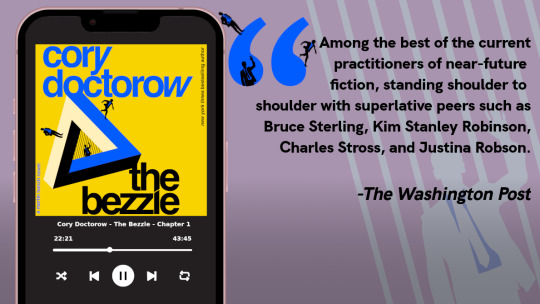
I'm Kickstarting the audiobook for The Bezzle, the sequel to Red Team Blues, narrated by @wilwheaton! You can pre-order the audiobook and ebook, DRM free, as well as the hardcover, signed or unsigned. There's also bundles with Red Team Blues in ebook, audio or paperback.

If you'd like an essay-formatted version of this post to read or share, here's a link to it on pluralistic.net, my surveillance-free, ad-free, tracker-free blog:
https://pluralistic.net/2024/01/24/everything-not-mandatory/#is-prohibited

Image:
Belem (modified)
https://commons.wikimedia.org/wiki/File:Desire_path_%2819811581366%29.jpg
CC BY 2.0
https://creativecommons.org/licenses/by/2.0/deed.en
#pluralistic#desire paths#design#drm#everything not mandatory is prohibited#apps#ip#innovation#user innovation#technological self-determination#john deere#twitter#felony contempt of business model
3K notes
·
View notes
Text
warrior cat designs based on those fuckass ultimate guide color palettes
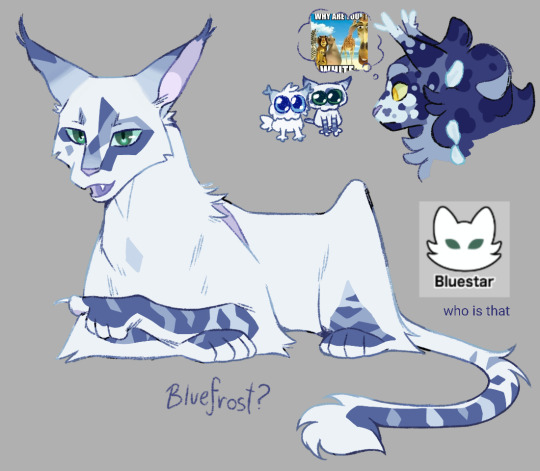


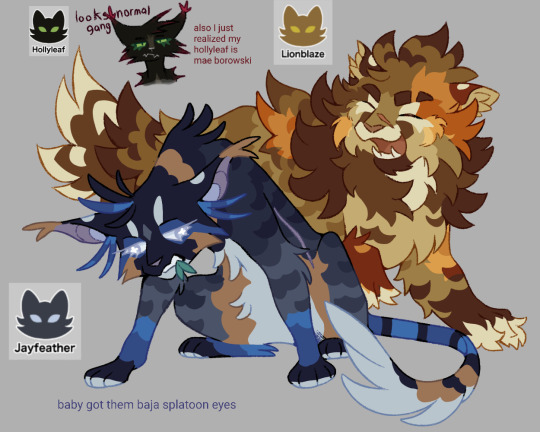
Swatch diagrams made by @/Sunnyfall , please look at them because what was happening behind the curtains that lead to cinderheart being blonde and ivypool brown
#hello warriors fandom i havent read a book in years#this entire thing is funny because whoever chose those swatches clearly had 0 idea what was going on#yellowfang ivypool and runningnose all have the same colour and its Not gray#art#bluestar#leafstar#dovewing#jayfeather#lionblaze#warriors#moonflower#hollyleaf#wc#warrior cats#wc designs#warrior cats designs#warrior cat designs#my 12yo self leapt at the opportunity to draw the murder cats again#warriors ultimate guide
5K notes
·
View notes
Text





10 years in the future for Nanako-chan
#nanako dojima#persona 4#yu narukami#ryotaro dojima#tohru adachi#a little sister... a LITTLw sister. you expect me to not fawn...? to not crumble? ok....#go on. look....... go on. GO ON!!!!! (crazed) (eye twitching) (i like these 4 and nana-chan especially)#hope you like my older design for her...#funfacts i said on twitter so i'll put on tags here:#adachi did his time in jail quick. yu's 27 and still looks the same. pretty bancho#i think nanakos signature color would change from pink to yellow. yu doesn't actually wear any yellow at all in p4g IIRC#but it is a color you associate him with the most. i want nanako to adopt that color. BUUUTTT#for self indulgent's sake she does wear pink to get yu to dote on her more. (reminds him fondly of baby nana-chan)#(AGHHHHHHHHHHHHHHHHHHHHHHH!)#oh yeah and adachi's a hag. i think his fashion is handpicked by yu probaably.#(thinking if i missed anything else) ahhhh........... nanako-chan... return for p6 or something. ok byeee!
3K notes
·
View notes
Text

Finally finished this after ages ಥ‿ಥ
☆Twitter Version☆
Original Template by @popipurin
#literally procrastinated for months#missed the point of the challenge too#my designs for The Gang#scum villian self saving system#scum villain#svsss#svsss fanart#mxtx#mxtx fanart#shen qingqiu#shen yuan#luo binghe#luo bingge#shang qinghua#mobei jun#liu qingge#yue qingyuan#liu mingyan#sha hualing#ning yingying#ming fan#tianlang jun#su xiyan#zhuzhi lang#gongyi xiao#shen jiu#moshang#bingqiu#drawing meme#draw svsss from memory
2K notes
·
View notes
Text

Ashfur (TC)
#ashfur#wc designs#thunderclan#warrior cats#my art#warrior#this one’s definitely a little more self indulgent than the others but he deserves it <3
1K notes
·
View notes
Text

🥇— [ 1ST PLACE ]
Oakland, CA — (41.6%).
Crowned as your first place from the US - Canada leg is a classic, a piece we all loved to see Louis in: a self-designed Black Turtleneck. It has minimal details that compliment it perfectly, such as the Red 28 printed on his neck.
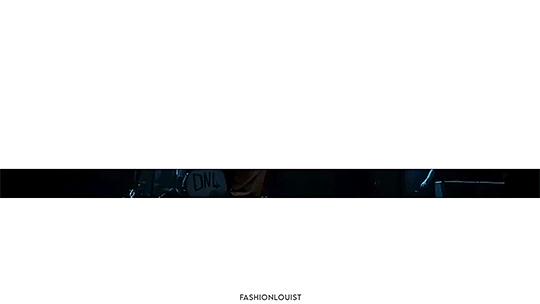
🥈— [ 2ND PLACE ]
Austin, TX — (32.8%).
Coming in second place is Louis’ Beams Plus Knit Argyle Polo Shirt in Black, Yellow and Cream. Focused on creating timeless pieces that encompass the nostalgia of past generations with a twist, Beams Plus was Louis’ pick for this show.

🥉— [ 3RD PLACE ]
New York night 1, NY — (27.4%).
Considered one of “The Most Praiseworthy Polos” of 2022 by GQ Magazine, Louis took the stage of his first New York City show wearing one of his favourite brands — a Burberry Monogram Motif Check Jacquard Polo Shirt.
[ Check the top 10 on our twitter ]
#louis tomlinson#louis tomlinson fashion#louis fashion#fashionlouist#self designed#beams plus#burberry#ltf22#ltwtf#ltwt 2022: us and canada outfit ranking
123 notes
·
View notes
Text
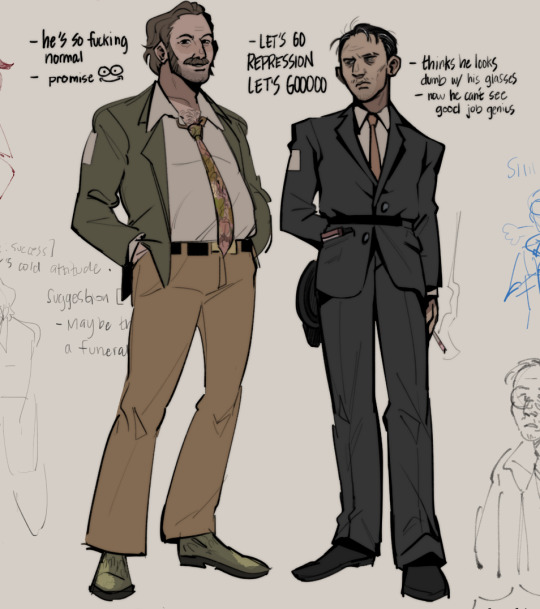
very old doodle of a roleswap au idea bc y'all know how it is with me
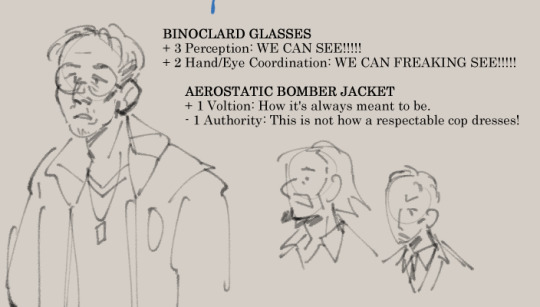
#i dont think kim gets 'wild' i think he gets so incredibly absorbed with his job and thats how he self-destructs amen#theres not a lot to this i just like character designing DFGHDJ#disco elysium#harry du bois#kim kitsuragi#disco elysium role swap#sunnysidedoodles#sunnysidedraws#sunnysidedisco#id in alt text#described#smoking#tw smoking#cw smoking#den's disco swap
2K notes
·
View notes
Text
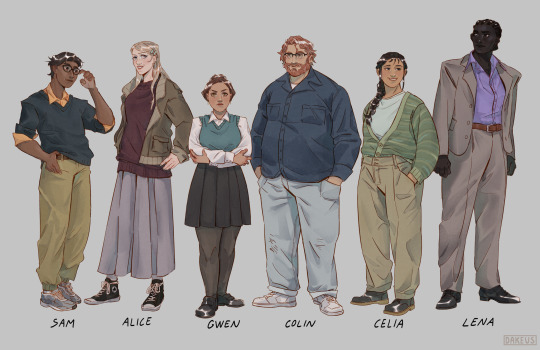
My take on the new cast!
#maybe Lena’s design is just a bit too self indulgent#but I’m the one holding the apple pencil#I can do what I want#I hope I didn’t miss any canon descriptions#if I did I blame it on the fact that english isn’t my first language#my art#tmagp#tmagp fanart#tmagp cast#the magnus protocol#digital art#character design
2K notes
·
View notes
Text
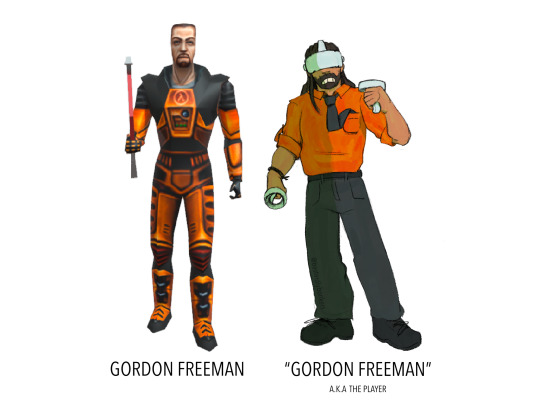

feetman
#hlvrai#half live vr but the ai is self aware#gordon freeman#gordon feetman#so idk if theres any like ‘metastory’ to there being a player or if its literally just supposed to be wayne#but i thought it would be kinda interesting for the player to be his own guy#cause like to me#a big part of it that makes it fun is that gordon has like#no actual stakes#dude is getting pissed for the sake of it#he knows its a game and is just freaking out at the ai being so alive u know#now since i cant remember if theres some kind of canon or metastory to the player you can completely decide for yourself why hes playing#or how he got the game#is he just some guy? is it an experiment? is it for his job? who knows!#hes The Player#also if ur wondering why his design is so similar to gordons#its cause i didnt wanna stray into the unrecognizable lmao#also. i really really really didnt wanna draw the fucking suit#and yes thats benrey on the tamagotchi#i think it would be very funny if he could cart them all around in tamagotchis#sorry for long tags
2K notes
·
View notes
Photo
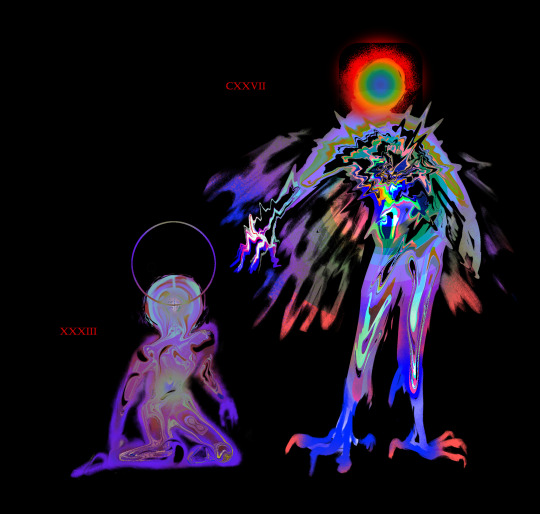
cherub design concepts
#eyestrain#bright colors#character design#angels#angel#digital art#illustration#artists on tumblr#original character#ocs#33 (oc)#127 (oc)#theyre numbered instead of named because angels arent allowed to have a sense of self#png#my ocs#my angels
18K notes
·
View notes
Text




#céline#bulgaria#cartier#porsche#luxury aesthetic#billionaire#level up#luxury#millionaire#glow up#girl boss aesthetic#self care#self love#boss#luxuries#designer jewelry#designer brands#that girl#women in luxury#it girl#black women in luxury#high value woman#high quality#luxury beauty#rich aesthetic
1K notes
·
View notes